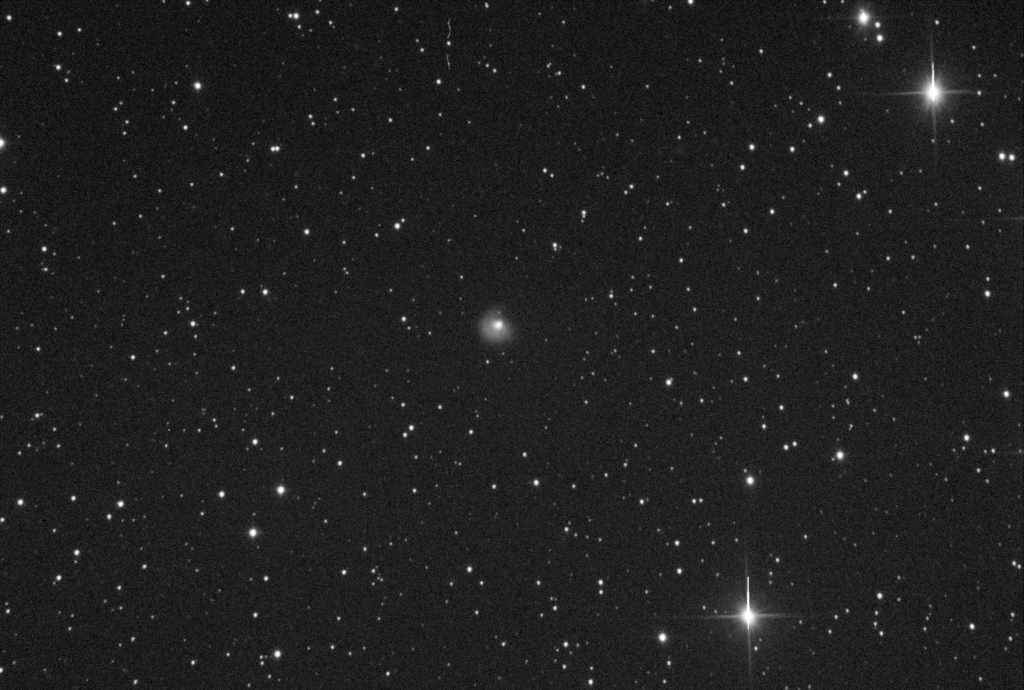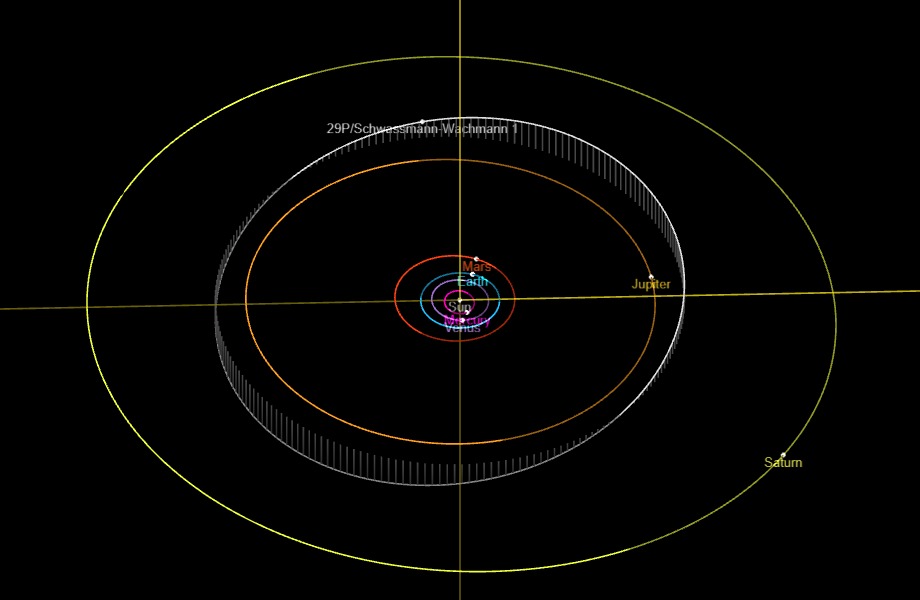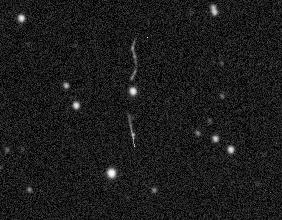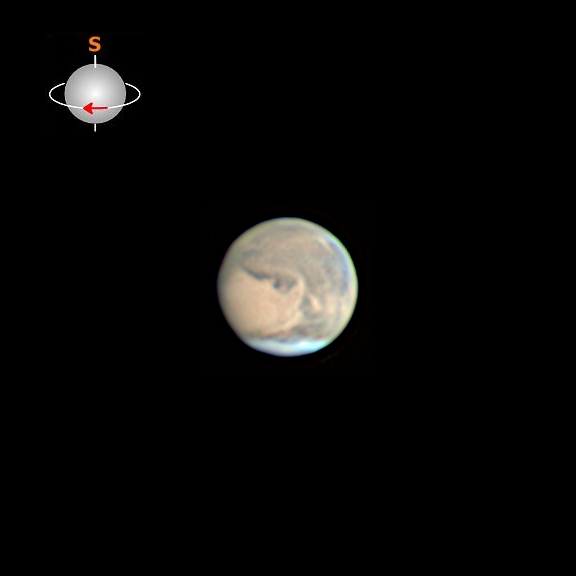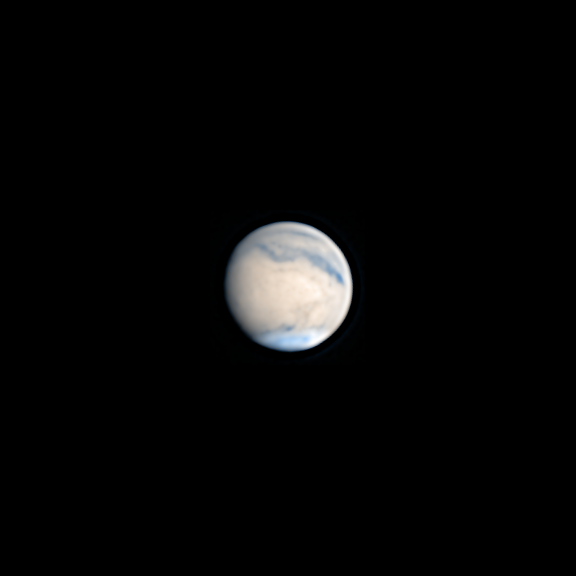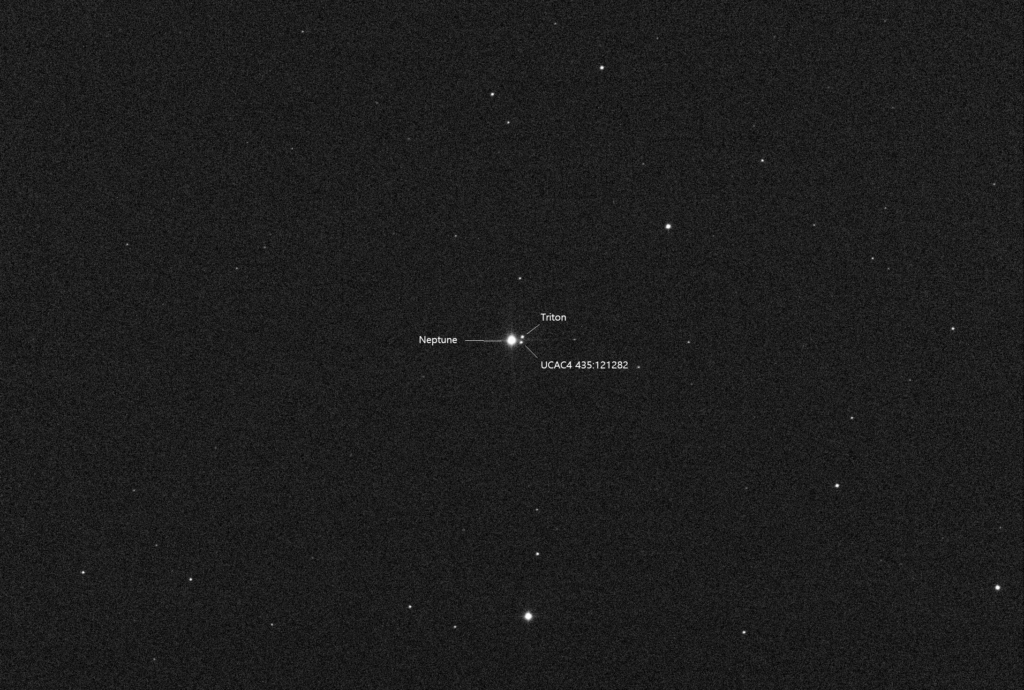Comet 29P is known for its periodic outbursts. It grabbed earth-based astronomer’s attention again on the 22nd of November. On average, the comet brightens 7.3 times per year. Normally, the comet’s magnitude is around 16.0 but current measurements show the comet at 12.2. Remember, the lower the number, the brighter the object. This image shows the characteristic ‘notch’ in the comet’s coma and close examination shows a slight, barely visible twist in it.
Because its orbit lies entirely between Jupiter and Saturn, it is classified as a Centaur object. Its year is 14.7 earth years long and currently lies above the ecliptic. The nucleus of the comet is estimated to be roughly 60 km (37 mi) in diameter.
As of the 2nd of December, the comet is visible in the constellation Gemini. It rises around 1830, transits the meridian at 0155 and sets well after sunrise at 0914.
Also visible top-center in the first image is an excellent example of how sensitive modern CCD chips are.
The tracks visible are attributed high energy particles impacting the chip. Straight tracks are expected from cosmic rays or muons created by cosmic rays hitting atoms in our atmosphere. Curved tracks, known as worms, indicate somewhat less energetic particles thought to be generated by “Compton scattering” due to emissions by physical components in the immediate area of the chip. Some glass formulae (e.g. BK7) are notorious for this. However, the proximity, directionality and time constraints of this image could indicate that the straight and curved tracks are related to the same event.
